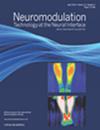经颅直流电刺激和运动对唾液 S100B 蛋白血脑屏障通透性的影响:一项试点研究
IF 3.2
3区 医学
Q2 CLINICAL NEUROLOGY
引用次数: 0
摘要
本研究旨在评估经颅直流电刺激(tDCS)和运动对人体血脑屏障(BBB)通透性的影响,并通过唾液蛋白生物标志物 S100B 的定量评估。研究假设,与假刺激和无刺激相比,主动 tDCS 会引起唾液 S100B 浓度的显著增加。材料和方法共有 13 名健康成年人(5 名男性,8 名女性)接受了三种实验条件(主动 tDCS、假 tDCS 和非主动对照),他们的年龄从 21 岁到 32 岁不等。为了评估运动和 tDCS 诱导的 BBB 通透性变化,对唾液中的 S100B 进行了测量。唾液样本在 tDCS 之前、tDCS 之后以及紧接着斜坡循环耗时(TTE)任务之后采集。结果对照组的 S100B 浓度与主动组(估计值 = 0.10,SE = 0.36,t = 0.27,p = 0.79)或假阳性组(估计值 = 0.33,SE = 0.36,t = 0.89,p = 0.38)没有显著差异。同样,基线时的 S100B 浓度与干预后(估计值 = -0.35,SE = 0.34,t = -1.03,p = 0.31)或 TTE 后(估计值 = 0.66,SE = 0.34,t = 1.93,p = 0.06)的 S100B 浓度没有显著差异。虽然 tDCS 的影响并不显著,但疲劳骑车任务后唾液 S100B 的增加可能表明运动诱导了 BBB 通透性的变化。本文章由计算机程序翻译,如有差异,请以英文原文为准。
The Effects of Transcranial Direct Current Stimulation and Exercise on Salivary S100B Protein Indicated Blood-Brain Barrier Permeability: A Pilot Study
Objective
This study aimed to assess the effect of transcranial direct current stimulation (tDCS) and exercise on blood-brain barrier (BBB) permeability in humans as assessed through the quantification of the salivary protein biomarker S100B. It was hypothesized that active tDCS would induce a significant increase in salivary S100B concentration when compared with sham stimulation and no stimulation. It also was hypothesized that the increase in salivary S100B concentration would be greater after active tDCS and exercise than after tDCS or exercise alone.
Materials and Methods
A total of 13 healthy adults (five male, eight female), ranging in age from 21 to 32 years, underwent three experimental conditions (active tDCS, sham tDCS, inactive control). To assess exercise- and tDCS-induced changes in BBB permeability, S100B in saliva was measured. Saliva samples were taken before tDCS, after tDCS, and immediately after a ramped cycling time-to-exhaustion (TTE) task. Active tDCS involved the application of anodal stimulation over the primary motor cortex for 20 minutes at 2 mA.
Results
S100B concentrations in the control condition did not differ significantly from the active condition (estimate = 0.10, SE = 0.36, t = 0.27, p = 0.79) or the sham condition (estimate = 0.33, SE = 0.36, t = 0.89, p = 0.38). Similarly, S100B concentrations at baseline did not differ significantly from post-intervention (estimate = −0.35, SE = 0.34, t = −1.03, p = 0.31) or post-TTE (estimate = 0.66, SE = 0.34, t = 1.93, p = 0.06).
Conclusions
This research provides novel insight into the effect of tDCS and exercise on S100B-indicated BBB permeability in humans. Although the effects of tDCS were not significant, increases in salivary S100B after a fatiguing cycling task may indicate exercise-induced changes in BBB permeability.
求助全文
通过发布文献求助,成功后即可免费获取论文全文。
去求助
来源期刊

Neuromodulation
医学-临床神经学
CiteScore
6.40
自引率
3.60%
发文量
978
审稿时长
54 days
期刊介绍:
Neuromodulation: Technology at the Neural Interface is the preeminent journal in the area of neuromodulation, providing our readership with the state of the art clinical, translational, and basic science research in the field. For clinicians, engineers, scientists and members of the biotechnology industry alike, Neuromodulation provides timely and rigorously peer-reviewed articles on the technology, science, and clinical application of devices that interface with the nervous system to treat disease and improve function.
 求助内容:
求助内容: 应助结果提醒方式:
应助结果提醒方式:


